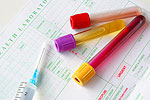 Triglycerides are a certain type of fat that circulates in your blood. Unlike cholesterol, which helps your body build cells and make certain hormones, triglycerides supply your body with energy. High triglyceride levels (hypertriglyceridemia) occur when you eat more calories than your body burns. This is a part of metabolic syndrome, and what I’ll look at here today.
Triglycerides are a certain type of fat that circulates in your blood. Unlike cholesterol, which helps your body build cells and make certain hormones, triglycerides supply your body with energy. High triglyceride levels (hypertriglyceridemia) occur when you eat more calories than your body burns. This is a part of metabolic syndrome, and what I’ll look at here today.
High triglyceride levels lead to hardening of the arteries, which raises your risk for stroke and heart attacks. At times, high triglycerides could be due to such medications as tamoxifen, steroids, diuretics, oral contraceptives, and beta blockers. How do you know if your triglycerides are high? Your doctor could order a fasting blood sample and determine if your triglyceride level is normal or high. Here’s what the resulting test numbers mean:
— Normal: Less than 150 mg/dL
— Borderline high: 150 to 199 mg/dL
— High: 200 to 499 mg/dL
— Very high: Over 500 mg/dL
Use your diet to lower high triglycerides. Certain diets include “Weight Watchers,” “South Beach,” “Zone,” “Atkins,” and the Mediterranean diet. Other diet-related factors that could help you include avoiding simple carbohydrates (e.g. sugar and white flour), avoiding trans fat in fried foods and baked products (e.g. cakes, cookies, crackers), and eating more fish high in omega-3 fatty acids (e.g. salmon, mackerel).
Supplements can help as well. Red wine in moderate amounts has been shown to lower elevated triglycerides. In a study of 69 healthy men and women (38 to 74 years), people were randomized to four groups: 1) Red wine (men: 300 ml/day; female 200ml/day); 2) Water plus red grape extract tablets (wine-equivalent dose); 3) Water plus red grape extract tables (half dose); or 4) Water plus placebo tablets for one month. Results:
— Wine consumption led to a significant increase in fasting HDL cholesterol by 11%-16%.
— Wine consumption did not lower the fasting LDL cholesterol, total cholesterol, or blood pressure.
The omega-3 fatty acids EPA and DHA are responsible for helping lower triglycerides. The total EPA and DHA dose recommended is between two and four grams a day. Even though omega-3 fatty acids are available over the counter, the American Heart Association recommends that lowering very high levels of triglycerides (over 500 mg/dL) with omega-3 fatty acids be done under the care of a physician with the prescription-grade omega-3 fatty acids (“Omacor” capsules).
Soy protein has been shown to lower high triglycerides in a double-blind, placebo-controlled trial involving 138 healthy and many obese (BMI 25-30) volunteers (age 26 to 69 years old). In it, the soybean treatment led to a significant reduction in triglycerides as compared to no decrease for the placebo. The soybean treatment also led to a significant reduction in body fat.
